Melting Hearts Word Search
We have a love of baking soda and vinegar here at Inspiration Laboratories. Our frozen vinegar hearts are still one of the most popular post on the site. I’ve been wanting to try frozen baking soda and I finally found the perfect opportunity. This melting hearts word search combines my son’s love of a fizzy reaction with literacy skills. Try it out and let me know what you think!
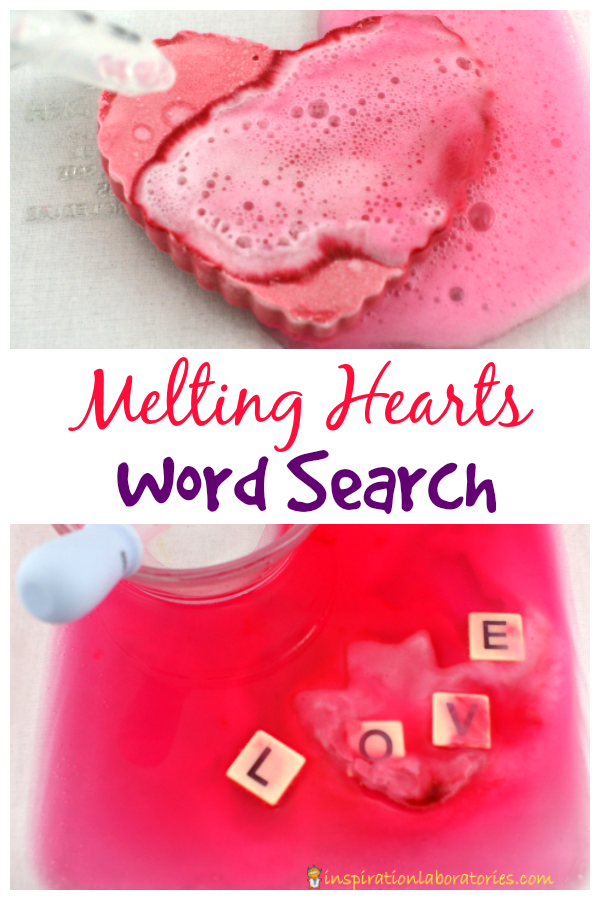
Melting Hearts Word Search
Supplies you’ll need: (Amazon affiliate links are included below.)
- Baking soda
- Water
- Vinegar
- Heart shaped cookie cutters or molds
- Containers
- Droppers, spoons, and/or cups
- Liquid watercolors or food coloring
- letter tiles – We used Bananagrams
. You could also use Scrabble
tiles or something similar. (These are the same letter tiles we used in our Draw a Letter Matching Game.)
Add a tablespoon or two of water to a cup of baking soda. Add in some liquid watercolors or food coloring. Mix together until it becomes moldable. You don’t want the baking soda to dissolve in the water. You want it to be just wet enough for the baking soda to come together.
Add letter tiles to the inside of a cookie cutter or mold. I spelled Aiden’s name and some Valentine words. Cover the letter tiles with the baking soda mixture.
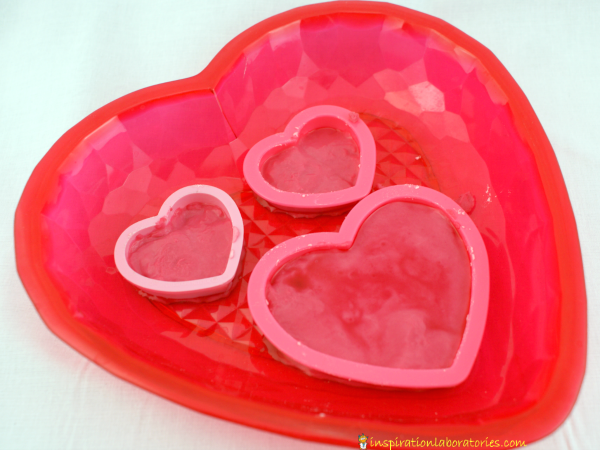
Place the hearts in the freezer for few hours. Pop the frozen baking soda out of the cookie cutters. (You could skip the step of freezing the baking soda if you want a quicker activity. Just leave the baking soda in the cookie cutters.)
Set up an invitation for your child to explore. Place a container of vinegar (or vinegar and water) next to the hearts. Add droppers, spoons, or measuring cups. You could also use a squeeze bottle. Scroll down to watch the video below.
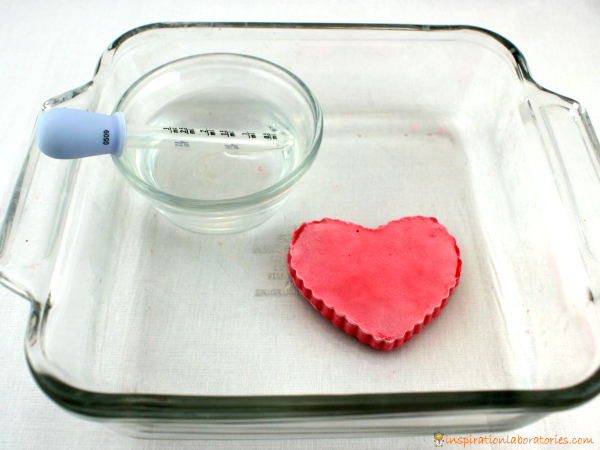
As your child drops vinegar onto the frozen baking soda, it will react and form bubbles (carbon dioxide).
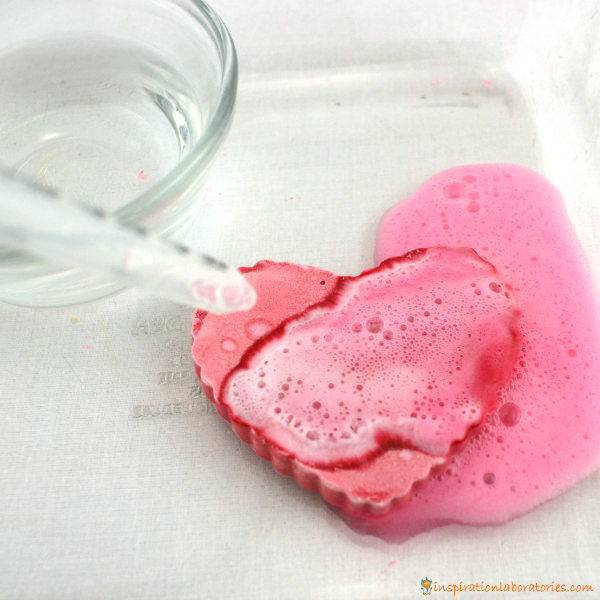
The baking soda will dissolve away and reveal the letter tiles.
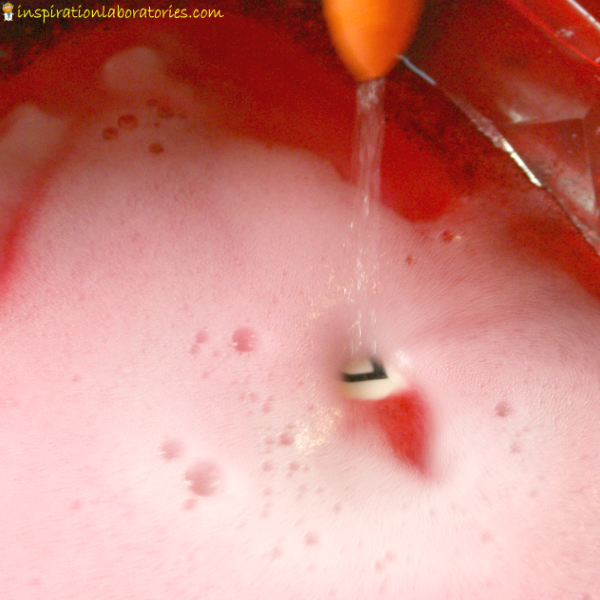
When enough of the baking soda “melts” and the fizz dies down, an entire word will be revealed. Ask your child to read the word. Aiden was very excited to see the letters in his name under the fizz and he liked reading the other words under the hearts, too!
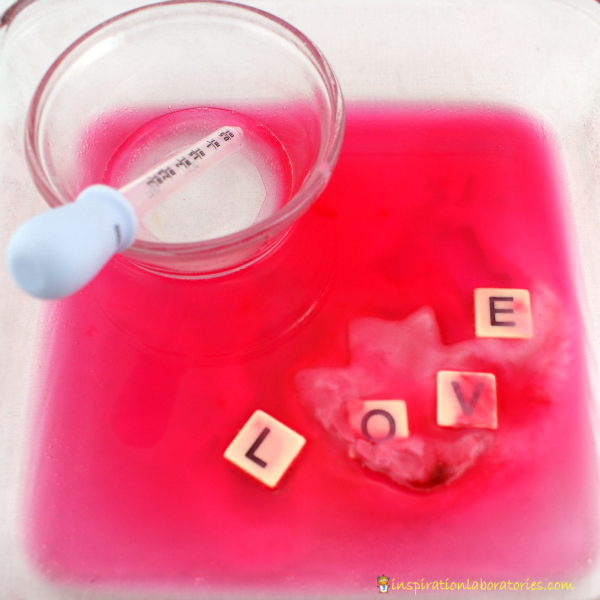
Watch the video below:
Since the baking soda was frozen, Aiden also requested to use warm water to dissolve the baking soda. He deemed it faster than using vinegar. It got to the letter tiles more quickly. We talked about the differences between using warm water vs. vinegar. The warm water was a higher temperature so it melted the ice and dissolved the baking soda more quickly than the room temperature vinegar. The warm water did not produce bubbles though. The water did not react with the baking soda like the vinegar did. Learn more about the baking soda and vinegar reaction.
Use this activity to practice name recognition, spelling, reading sight words, or even letter practice.
More Valentine’s Day Science Activities
- Frozen Vinegar Hearts – What happens when we freeze vinegar? Set up this investigation to find out.
- Candy Heart Reactions – This candy science investigation tests to see if candy hearts react with baking soda or vinegar.
- Candy Heart Ingredient Experiment – This candy science experiment tests which ingredient in candy hearts reacts with baking soda.
- See more of our collection of Valentine’s Day Science Experiments and Activities.
Be sure to subscribe to our weekly newsletter and get exclusive science explorations for young scientists in each issue.
![]()
This post was originally published on January 19, 2015.

Leave a Reply